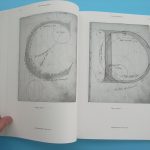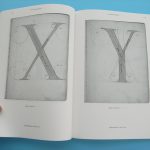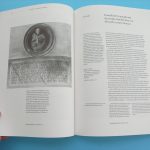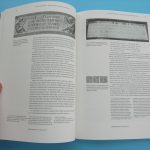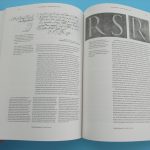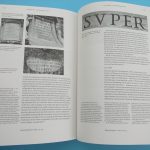This occasional, book-length work is edited and produced at the Department of Typography, University of Reading, and is now published by Hyphen Press. It publishes extended articles on its subject, exploring topics to the length to which they want to go. Its scope is broad and international, its treatment – serious and lively.
Articles from Typography papers 6 are available as pdf files, free to download here
Contents
Nicolete Gray:
The Newberry alphabet and the revival of the roman capital in fifteenth-century Italy
The Newberry alphabet
with a note on provenance by Paul F. Gehl
Giovanni Mardersteig:
Leon Battista Alberti and the revival of the roman inscriptional letter in the fifteenth century
Paul Stiff:
Brunelleschi’s epitaph and the design of public letters in fifteenth-century Florence
James Mosley:
Giovan Francesco Cresci and the baroque letter in Rome
Synopsis
This issue focuses on the reconstruction and reinvention of the classical letter in Italy in the fifteenth and sixteenth centuries. It includes a previously unpublished article by the late Nicolete Gray. This reproduces, in 26 full-page illustrations, an unsigned and undated (late fifteenth century) manuscript of an alphabet of capital letters, presently in the Newberry Library, Chicago, and provides the first analysis of this important document. Other articles here are the first English translation of the late Giovanni Mardersteig’s seminal essay of 1959 (‘L.B. Alberti e la rinascita del carattere lapidario romano nel quattrocento’), and James Mosley on Giovan Francesco Cresci’s formative influence on the form of Western handwriting, and hence on typefaces, and on the inscriptional capitals which appeared on new buildings in Rome between 1585 and 1590. Paul Stiff contributes a piece on ‘Designing public letters in fifteenth-century Florence’.
Reviews
The title of ‘Typography papers’ is misleading, since its interests range far beyond the worlds of typography and type design to encompass letterforms of all kinds – whether calligraphic, inscriptional, mechanical, or electronic – and their uses. It should be of interest to paleographers, epigraphers, art historians, graphic designers, and all others whose work involves visual language. The current issue is a perfect example of this.
Paul Shaw, Renaissance Quarterly, 2007


